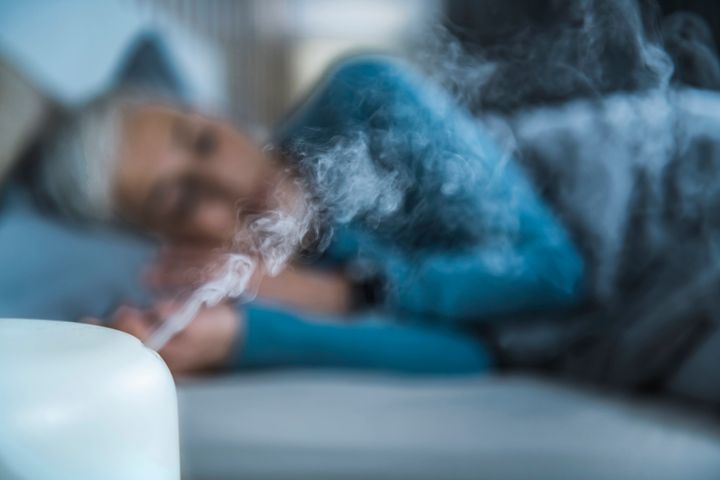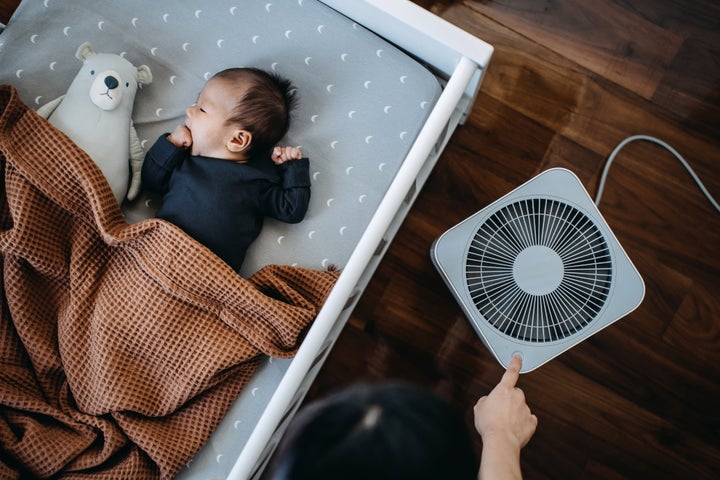
Humidifiers can be beneficial for your health, especially when you’re sick or dealing with dryness in your home. But if you don’t regularly maintain them, they can cause more harm than good.
“If you don’t properly clean out your humidifier, it essentially turns into a gigantic petri dish, which isn’t great for air quality,” said Michael Rubino, a mould and air quality expert and founder of HomeCleanse. “What ends up happening is every time we breathe, which we breathe 20,000 times a day, roughly, we’re going to be inhaling these particles into our bodies.”
We talked to experts about the health repercussions of not cleaning your humidifier and expert-backed tips for properly disinfecting it.
What are the benefits of having a humidifier in your home?
Humidifiers release moisture into the air and can help with allergies, asthma, colds and flu symptoms. They are also particularly useful if your house is dry due to heat or air conditioning. They can relieve nasal dryness, a dry cough and even dry skin or eczema, Dr. Rupam Brar, allergist and immunologist and associate professor of paediatrics at New York University Grossman School of Medicine, told HuffPost.
The ideal humidity in the home is between 30-50%. You can measure it with a hygrometer, a thermometer-like gadget that measures moisture in the air, according to Mayo Clinic.
What happens if you don’t clean your humidifier?
Rubino said that mould and bacteria are the biggest culprits — and the more they are allowed to grow, the more they will rapidly reproduce.
When a humidifier releases air filled with bacteria or mould, it can cause flu-like symptoms and lung diseases, according to Mayo Clinic. If you’re inhaling airborne mould spores, this can trigger allergies and asthma, Brar explained. In rare cases, it can lead to “humidifier lung” or hypersensitivity pneumonitis, an immune system disorder that causes your lungs to become inflamed. This and other serious health repercussions are most likely to occur if someone is immunocompromised.

“We’re learning a lot more about how mould and bacteria can disrupt the gut microbiome and cause things like inflammation, which can lead to … brain fog and chronic fatigue syndrome,” Rubino added. Your immune system can also be weakened from being exposed to too much mould or bacteria, which can cause you to get sick more often.
So what’s the best way to clean and disinfect your humidifier?
These expert-backed tips will help prevent mould and bacteria from growing in your humidifier:
- Ideally, clean your humidifier twice a week (once a week at the very least), according to Rubino.
- Use distilled white vinegar instead of bleach. “[Vinegar is] a great disinfectant agent … that most people already have in their pantries,” Rubino said. He recommends a one-to-one ratio of vinegar and water. While bleach used to be one of the most popular cleaning products, it’s not as effective at removing mould as vinegar. “[Bleach can] actually make mould look like it’s gone because it’ll turn it lighter in colour,” he added. But it doesn’t mean it’s actually killing or removing it.
- Let the vinegar and water solution sit in the humidifier for about 20 minutes. Make sure to unplug the humidifier and only soak the parts that can be cleaned, according to the manual. “Never run the vinegar through the machine in the home … [this could] release vinegar into the air and lead to unwanted exposures,” Rubino explained. It could also potentially damage parts of the humidifier.
- Use a microfibre towel instead of a terrycloth or paper towel to scrub and dry the humidifier. “Microfibre is actually a hundred times more effective at removing …very tiny particles like mould or bacteria,” he said. When wiping each piece, use a clean side of the cloth. Make sure to use a clean, unused microfibre towel for drying. If you are scrubbing away mould, discard the towel after use.
- While some humidifier tanks are marketed as dishwasher-friendly, Rubino said most dish detergents are anti-bacterial but not fully antimicrobial, which means they won’t be as effective against mould as scrubbing with a vinegar and water solution. Mould can survive in extreme temperatures, so even the heat from the dishwasher is not enough to remove it.
- Use bottled “distilled” water to fill your humidifier because it contains lower mineral content and will prevent releasing minerals into the air, according to the EPA. (Using tap water could cause mineral deposits in your humidifier that could lead to the growth of microorganisms.) Some humidifiers include demineralisation cartridges or filters that are effective at removing minerals from tap water.
- If your humidifier has a filter, make sure you are replacing it as needed. (Check the manual to see how frequently it needs to be changed.) Whole home humidifiers usually come with disposable filters that should be replaced every year, and portable humidifiers have filters that either need to be replaced or washed when they are clogged and dirty, according to the American Cleaning Institute. If you don’t replace your filters, mould could be even more likely to grow in your humidifier. Dust and debris may also be released into the air, leading to sickness or allergies. If the filter becomes clogged, the humidifier will not be able to release as much moisture into the air.
- In addition to cleaning your humidifier a couple of times a week, the EPA recommends emptying the water from the tank daily, drying the surfaces, and refilling with new water for the next use.
Even if your humidifier doesn’t look dirty, it doesn’t mean mould or bacteria isn’t there: “Mould … is 25 to 50 times smaller than what the eye can see … Bacteria is even smaller than mould,” Rubino told HuffPost. If you can see mould in your humidifier, “that means it’s already colonised and there’s already hundreds of thousands if not millions of it present.”
So, what do mould and bacteria look like when you can see it? Rubino said it could come in different colours, such as green, pink, white, grey, blue, red, black, brown or a combination of these. They can be powdery, velvety, fuzzy or slimy in texture. “Pink stuff” is commonly reported in humidifiers when they’re not properly cleaned. This could be a mold (Aureobasidium pullulans) or bacteria (Serratia Marcescens). “Microbial growth can also create a musty, earthy, damp, cigar-like smell when present, so pay attention to this as well,” Rubino advised.
You don’t want to wait until you can see a problem to start regularly cleaning your humidifier.
“There’s a pretty wide breadth of what [mould and bacteria] can actually do to us,” Rubino said. “That’s why it’s so important … to clean appliances like humidifiers that have water or moisture accumulation inside of them.”